In our first of three year-end articles, child of the ’80s Luke Littleboy tries to sense-make in a Post-Thatcher, Post-9/11, Post-Bailout, Post-Brexit, Post-Trump, very much not Post-Covid 21st century through the context of his boyhood cinematic heroes.
The jig is up, isn’t it. Modern box office cinema just ain’t that interesting. From a paint-by-numbers Star Wars reboot cycle, through Marvel’s exhaustive, exhausting and only sporadically entertaining brand expansion, to a global top ten that often can’t offer even two original Hollywood pictures, we’re all very aware that franchise films are seeing diminishing creative returns.
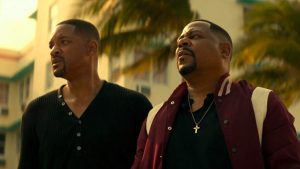
It’s completely understandable – the marketplace is global, and pictures with eye-watering budgets can only make a return by aiming for huge foreign markets like China, where language and cultural sensibilities are different to the West. Local flavour doesn’t travel, and nuance in execution has become impossible through necessity.
I made my peace with that a long time ago. I keep my franchise picture expectations at rock bottom, and instead look to find insight and enjoyment in dramas with budgets small enough that they can still afford to have something to say. But as a time-poor new dad still stuck in the restrictions of a global pandemic, there were only ever going to be two movies this year that got me back into a seat at the cinema – Cary Joji Fukunaga’s No Time to Die and Jason Reitman’s Ghostbusters: Afterlife.
For my wife and I, it’s no longer about anything as casual as “taking in a movie”. No, this is about “date night”. This is about finding that one day in the diary, arranging childcare, driving to the in-laws, arriving early, paying for parking, running back to the car for the masks, making sure, come hell or high water, we make it to that showing. And it’s in that mood that I settled in to try to enjoy these two films. Excited. Even elated. But with expectations managed.
No country for Bond men
As a boy, I adored Bond for its scale and set pieces and humour and pomp. I grew older and I still enjoyed each film, on some level, even as I realised Bond was, actually, pretty silly. That’s alright. That’s what Bond is.
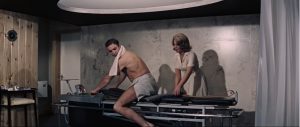
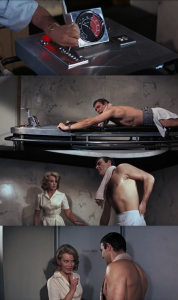
In 2021, we needed Bond. As a country. Maybe as a planet. After the delays, during the malaise, in between the lockdowns, British culture required continuity of its institutions and Ian Fleming’s James Bond is only a few months shy of the reign of the monarch he serves. It was time to take one last ride with Daniel Craig.

SO, we found that one day in the diary, we arranged childcare, we drove to the in-laws, we parked, we paid, we ran back, we queued up, we sat down, and we watched: No Time to Die. Among the best crafted and most engaging Bond films in the six-decade history of the franchise. A culmination of characters and events that span all 15 years of Craig’s tenure now having consequences and finding conclusions in a $300 million finale.
Was it enjoyable?
I can’t objectively claim that No Time to Die is worse than, say, Tomorrow Never Dies, Pierce Brosnan’s second outing, a film where the script is so beat-for-beat Bond that even on first viewing you can practically hum along. But I’d rather watch TND over NTTD. Why? Not because of its scale and its set pieces. But probably because of its humour. And definitely because of its pomp.
You’ve read about guys like me. I left that screening of No Time to Die bummed out. I was bummed out for the same reason I was bummed out by Henry Cavill’s first spin as Superman, 2012’s Man of Steel.

Because these heroes aren’t heroes. Because instead of saving all of the people all of the time and dropping the bad guy off in prison at the end, Superman – “Truth, Justice, and the American Way” – put the bad guy in a sleeper hold, broke his neck and had a cry. And in Bond 25, instead of escaping certain doom with a one-liner, saving the world and bedding the bird, James decides: you know what, actually, it’s a fine time to die, so, you all crack on and I’ll quietly expire.
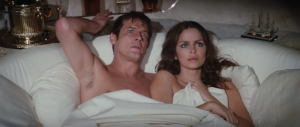
These heroes aren’t heroes, and they’re not having any fun. Are we?
No Time To Die also buckles under its own narrative weight. After an electrifying opening hour, the film is overwhelmed by the creative inertia that results from putting on a show this big – directorial desertions, rights negotiations, a decade of canon-building baggage, postponed releases, years of script revisions.
But I’m trying. This is appointment cinema. We are on date night. It took a lot to get us out, and I am bloody well going to engage with the film we paid to see. I’m following every line. When Ma, Pa and Baby Bond ostentatiously discuss mosquito bites, I am bothering to listen. “A Chekhov’s Gun!”, I thought, “Sure to pay off later!” But it didn’t. And I felt foolish for even paying attention. This far along, were the writers?
Another problem is contemporary Hollywood’s insistence on tying franchise films together, bolting on a cohering, lumbering mythos as a reason for you to keep coming back for more.
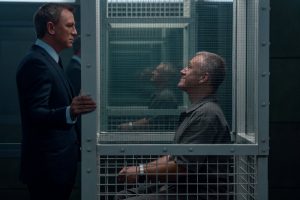
Classic Bond didn’t have to worry about that. There’s some cross-pollination from picture to picture, but they’re all stand-alone adventures. There’s a beautiful leanness to that. For five decades across 20 films, the new James Bond would open in theatres and speak to anyone at any time.
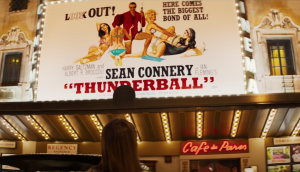
There was never a requirement to have watched the last five of the damned things to know what was going on.
“Heroes”
In 1977, post-Vietnam and post-Watergate, America fell into a new cynicism. George Lucas’ response to that cynicism was to craft a fairy-tale so magical that young people everywhere would understand what it meant to find courage. That courage made a boy a man and a man a hero, that courage could help you walk through a wall of fire to save your friends. Lucas based his work on classical myth, on stories so prevalent and essential to the human condition that we’ve retold them for centuries.
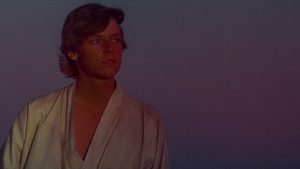
Forty years later, Hollywood’s response to the growing cynicism of the 21st century has been to “lean into it”. There’s a saddening assumption that contemporary audiences are too sophisticated to accept optimism, or cheer heroes. In the cynical 21st century, even Luke Skywalker has turned his back on his friends.

There’s certainly a place in cinema for the jaded antihero – but is it the 12A family-oriented franchise picture, the ostensibly escapist billion-dollar blockbuster?
I’m wary of the messages these movies play to children. Because, as corny as this sounds, out there in the cynical 21st century, the reason I always keep going and I never give up is because the franchise heroes I was given as a child of the ‘80s – Bond, Luke, Indiana Jones – showed me that you always keep going and you never give up. How do I parent in a culture where our fairy-tale heroes stop trying?
Ghostbusters: After Development Hell
In contrast, Ghostbusters: Afterlife delivered a big dose of heroes – the idols of my ‘80s childhood, back on the big screen – and it certainly had a shot of pomp, too. With Ghostbusters 3 in development hell for decades, the creative furrow ploughed by Afterlife is really the only patch of fertile land left – not a film about the Ghostbusters, but a film about Ghostbusters.
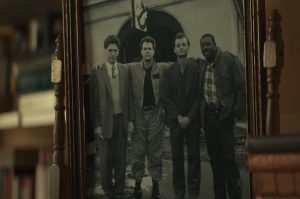
The nostalgia was poured on thick like heavy syrup. Some of it does not make sense – didn’t the Stay-Puft Marshmallow Man only appear as a spirit because Ray recalled a personal childhood memory? but now they live in Walmart? – and I grimaced as plot twists were simply characters and connections lifted from the first movie. But, fine – it’s just a victory lap. Saccharine, but palatable. This was clearly a love letter from Jason Reitman to dad, Ivan. A love letter to Jason’s own childhood perception of Ghostbusters. And mostly, of course, a love letter to Harold Ramis.
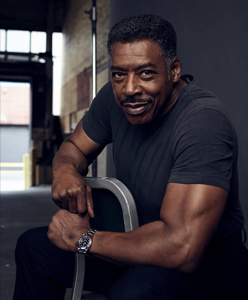
It would take a heart of stone not to swell as Egon’s spectre quite literally guides the new characters through the film as they uncover the past and go on their own hero’s journey. Sat in that cinema, I did feel something during the big reveal. Yes, it’s corny. And I’m fairly sure they got the idea for the film after watching that one episode of Stranger Things. But I’m glad I gave date night to the Ghostbusters.
Funny thing, though – as with No Time to Die, there’s no way I’ll be watching Afterlife ever again.
There’s always next year
In the case of Afterlife, the creative team gave me the biggest, warmest hug they possibly could, and because I’m a terrible human being, I still wasn’t satisfied.
Then I realise that the reason I’m finding that one day in the diary, arranging childcare, driving, paying, running, queuing, sitting, waiting (“John Lewis Christmas advert, already?!”), waiting (“Oh, God, it’s the long version!”) and, finally, watching, is to be taken away and told a story for a couple of hours. I’d like to learn something. If I’m watching big budget blockbuster hero stuff, I want a hero to cheer for. Finding, arranging, driving, paying, running, queuing, sitting, waiting, waiting, waiting… to then be served the Big Mac that tastes the same as the last time I tasted a Big Mac isn’t why I go to the cinema.
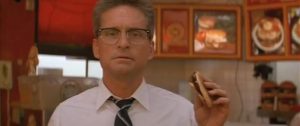
I wonder – what was the lightning-in-a-bottle for those original ideas in the first place? What circumstances made it possible for Fleming to create Bond? How’d Aykroyd dream up ghost busters?
And then I remember it took an actual intelligence agent in an actual world war to come up with James Bond. And then I remember that the screenplay for Ghostbusters was written in just two weeks by three best friends whose talents had long incubated in those early anarchic years of National Lampoon and Second City and Animal House and Stripes and SNL and SCTV.
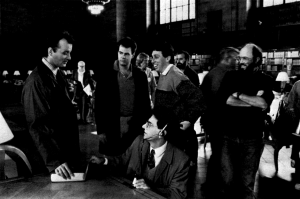
These things aren’t easy to replicate. There’s a big difference between those creative moments – snapshots in time seeking to express the experiences and interests of their originators – and the production line, writer’s room approach adopted by modern blockbusters, designed to generalise, standardise, smooth, soften. A Big Mac is a Big Mac wherever you go.
Next year, I’ll once again be on for only a handful of cinema trips. And though the hype-machine will try to find me on social media, I need to keep a level head. I need to choose carefully. I need to eat my greens, instead of reaching for that Big Mac.
I’m really looking forward to Jurassic World: Dominion.
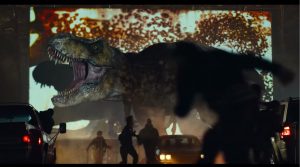
For a rundown of the other films that caught our eye in ’21, click through for Part 2!